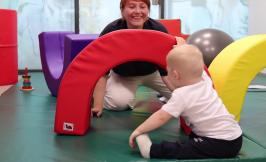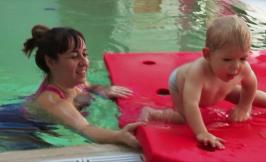Traumatic brain injury in children
Traumatic brain injury in children is caused by an external force that can bring about a decreased or altered level of consciousness and alter cognitive abilities, behaviour and physical functioning. The most common causes of childhood head trauma are car accidents, falls and interpersonal violence. They can also sometimes be caused by a diffuse axonal injury as a result of the high-speed coup-contrecoup impact that the brain receives when it suffers an injury. Diffuse axonal injury is when fibres in the cerebral white matter break down. The following can occur both at the time of impact and after different periods of time:
- Intracerebral haemorrhages.
- Cerebral oedema.
- Ischaemic lesions.
- Infections.
- Hydrocephalus: This is one of the most frequent complications due to the excessive accumulation of cerebrospinal fluid in the brain. Cerebrospinal fluid is the liquid around the brain and spinal cord. If a doctor suspects a case of hydrocephalus, the patient is monitored by an ICP sensor, which measures intracranial pressure. If hydrocephalus is confirmed, a shunt valve is put in place to drain excess fluid and relieve pressure on the brain.
- Post-traumatic epilepsy: This disorder is characterised by seizures that manifest some time after having suffered a head injury. For this reason, antiepileptic drugs are often prescribed after a traumatic brain injury to prevent seizures.
- State of coma: A coma is a pathological state characterised by unconsciousness that is resistant to external stimuli. A state of coma is not a disease in itself, but a syndrome. In other words, it is the expression of an underlying disease that can be treated.
Traumatic brain injuries in children are a common reason for attending an accident and emergency department. Although most do not lead to serious consequences, traumatic brain injuries are the main cause of death and disability in children older than 1 year in developed countries. It is estimated that 1 in 10 children will have a significant traumatic brain injury throughout their childhood. In these cases, a personalised assessment is needed to come up with the most appropriate treatment plan.
- Sequelae of a traumatic brain injury
-
The most common cognitive, behavioural and emotional impairments after a traumatic head injury are attention deficits, language disorders, memory problems, executive dysfunction, and behavioural and mood disorders.
- Neuropsychological disorders
- Impaired movement capacity
- Sensory problems
- Communication problems
.

Social skills training is aimed at children and adolescents who have difficulties in interpersonal relationships and in handling different social situations, either because they have a disorder that justifies these issues.

The Psychological treatment with Cognitive behavioural therapy brings together two types of therapeutic treatments, because although behavioural therapies are successful in the treatment of some pathologies, other aspects involved in the way in which people respond to different situations have to be taken into account.
The treatment of children’s cognitive telerehabilitation with Guttmann, NeuroPersonalTrainer® (GNPT®) is an active process that helps children with cognitive disorders, learning difficulties or behavioural problems to:
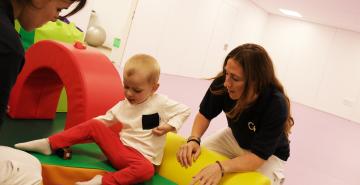
During the first sessions of child physiotherapy, we examine the child and collect all the data needed to set up a personalised programme, including an interview with the family to find out relevant aspects in order to establish the most appropriate plan for the child’s recovery:

In order to devise a child occupational therapy treatment programme adapted to the needs of each individual child, several key aspects are explored in the first sessions:
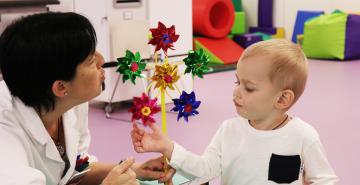
Child speech therapy begins with an assessment involving a physical examination of the child and the administration of standardised tests and questionnaires.
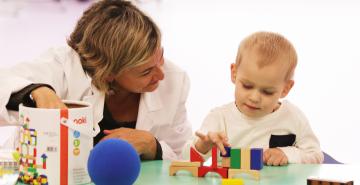
The Child Neuropsychological Intervention always takes place in individualised sessions which work individually with each child or young person.
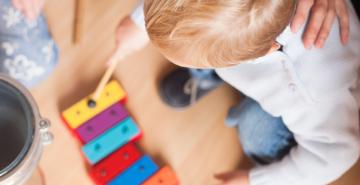
Music therapy is one of the treatment options available at Guttmann Barcelona, for both adult and paediatric patients affected by neurological injuries or diseases at different stages within the rehabilitation process.
Et pot interessar
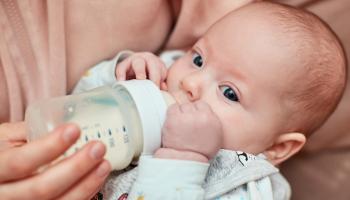 Wednesday, 21 August, 2024
Neonatal and childhood dysphagia: keys to detecting and treating swallowing difficulties
Wednesday, 21 August, 2024
Neonatal and childhood dysphagia: keys to detecting and treating swallowing difficulties
What do we mean by dysphagia? The European Society for Swallowing Disorders (ESSD) defines dysphagia as the medical term used to represent...
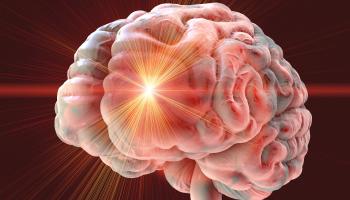 Thursday, 17 February, 2022
Aphasia, a consequence of brain damage
Thursday, 17 February, 2022
Aphasia, a consequence of brain damage
Types of aphasia and evolution People with non-fluent aphasia show reduced expression, often with difficulty articulating words. Their...
 Monday, 30 March, 2020
Robótica para la rehabilitación
Monday, 30 March, 2020
Robótica para la rehabilitación
El uso de la tecnología en el marco de un programa de rehabilitación integral ofrece la oportunidad de aumentar la intensidad y la...

